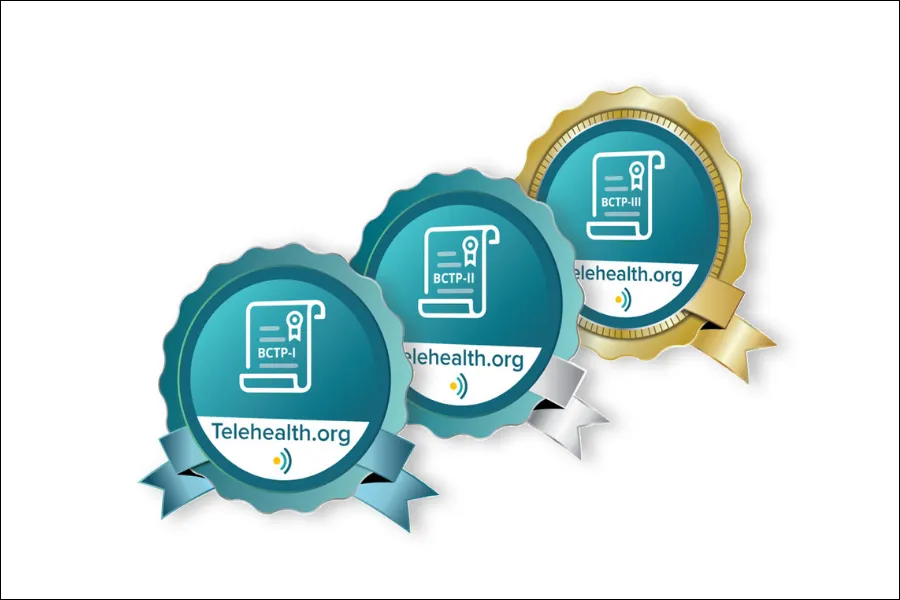
Please support Telehealth.org’s ability to deliver helpful news, opinions, and analyses by turning off your ad blocker. How
Although telemedicine has emerged as a crucial tool in expanding access to healthcare concerns about disparities in telemedicine usage are becoming more well-researched, particularly among historically underserved communities. In a cross-sectional study recently reported by the JAMA Network, an author team led by Felippe O. Marcondes examined telemedicine utilization data for Medicare beneficiaries. They focused on health disparities within the Black community and the Hispanic community.
Understanding Health Disparities in the Black Community
Health disparities in the Black community, as well as in the Hispanic community, encompass a complex web of socioeconomic, environmental, and systemic factors that contribute to differential access to healthcare and health outcomes. Within this framework, telemedicine has emerged as a potential avenue for bridging these disparities by overcoming barriers to traditional in-person care.
Key Findings of Recent Study
Their study examined a national sample of 14 ,305, 819 Medicare beneficiaries, of which 7.4% reported being Black, 5.6% Hispanic, and 4.2% other race. Initially, Black individuals, along with Hispanic and other marginalized groups, exhibited higher rates of telemedicine visits. However, a different narrative unfolded upon closer examination and adjustment for geographic factors. Despite residing in communities with greater telemedicine availability, Black individuals and other minorities received fewer telemedicine services compared to their White counterparts.
Exploring the Role of Geography
Geography emerges as a critical determinant shaping disparities in telemedicine utilization. Minority communities, often concentrated in urban areas with robust telemedicine infrastructure, paradoxically experienced lower telemedicine uptake. This geographic disparity underscores the need for targeted interventions to ensure equitable access to telehealth services across diverse populations.
Challenges & Opportunities
On other fronts, studies show that race-based differences exist not only in how different groups of people have access to technology but also in how that technology can be used to identify differences. More specifically, researchers from the University of Pennsylvania and the National Institute on Drug Abuse have demonstrated that artificial intelligence models used to identify depression in social media are less accurate with Black individuals when compared to White people. Addressing health disparities in the Black community through telemedicine requires a multifaceted approach that involves stakeholders at every level of the healthcare continuum.
Role of Behavioral Providers
To ensure equitable access to telehealth services across diverse populations, behavioral providers and their organizations can implement targeted interventions to address the specific needs and barriers marginalized communities face. Here is a detailed list of actions they can take:
- Community Outreach and Engagement. To bridge health disparities in the Black community and other groups, engage with local community organizations, leaders, and stakeholders to build trust and establish partnerships that facilitate outreach efforts to underserved populations. Conduct community-based events, workshops, and support groups to raise awareness about telehealth services and address misconceptions or concerns.
- Digital Literacy Programs. Develop educational programs and resources to improve digital literacy skills among marginalized communities, including older adults, low-income individuals, and rural populations. Provide training on how to use telehealth platforms, access virtual appointments, and navigate online healthcare resources.
- Financial Assistance Programs. Offer financial assistance or sliding-scale fees for telehealth services to make them more affordable and accessible to individuals with limited financial resources or insurance coverage. Explore funding opportunities and grants to support these initiatives.
- Accessible Technology Solutions. Ensure that telehealth platforms and communication tools are accessible to individuals with disabilities, including those with visual or hearing impairments. Provide accommodations such as closed captioning, screen reader compatibility, and assistive technology devices.
- Culturally Tailored Outreach Materials. Develop culturally relevant and linguistically appropriate educational materials, promotional campaigns, and outreach materials to reach diverse populations. Use images, languages, and messaging that resonate with the target audience and reflect their lived experiences.
- Flexible Appointment Scheduling. To accommodate patients ‘ diverse needs and preferences, offer flexible scheduling options, including evening, weekend, and virtual appointments. Allow for extended appointments and shorter wait times to reduce barriers to accessing care.
- Transportation Assistance Programs. Partner with transportation services or provide transportation vouchers to help patients overcome transportation barriers that may prevent them from accessing in-person or virtual appointments.
- Health Equity Task Forces. Establish interdisciplinary task forces or committees within behavioral health organizations to focus on health equity initiatives. Develop action plans, set goals, and monitor progress toward reducing telehealth access and outcomes disparities.
- Feedback Mechanisms. Implement feedback mechanisms to solicit input from patients and community members about their experiences with telehealth services. Use this feedback to identify areas for improvement and tailor services to meet the needs of diverse populations.
- Language Access Services. Offer language interpretation and translation services to ensure effective communication with patients with limited English proficiency or who speak languages other than English. This may include providing access to qualified interpreters, translated materials, and multilingual staff.
- Policy Advocacy. Advocate for local, state, and national policies supporting equitable access to telehealth services, including reimbursement parity, licensure flexibility, and regulatory changes that address healthcare barriers for underserved communities.
- Cultural Competency Training. Provide ongoing professional training for behavioral providers to enhance their cultural competency and sensitivity to diverse populations’ unique needs and preferences. This includes understanding cultural beliefs, values, and practices related to healthcare and mental health.
By implementing these targeted interventions, behavioral providers and their organizations can play a vital role in reducing disparities in telehealth access and improving health outcomes for diverse populations.
Conclusion
As we navigate the evolving landscape of healthcare delivery, confronting health disparities in the Black community remains an urgent imperative. With its potential to transcend geographical barriers and expand access to care, telemedicine is a promising tool in this endeavor. By harnessing the power of telemedicine and implementing equitable policies, we can forge a path toward a more just and inclusive healthcare system for all.
Health equity attempts are ongoing, requiring sustained commitment and collaboration from all stakeholders. By leveraging telemedicine as a catalyst for change, we can create a future where everyone, regardless of race or ethnicity, has equal access to quality healthcare. Together, let us continue the fight against health disparities in the Black community and other underserved communities to strive for a healthier, more equitable tomorrow.


Mastering Multicultural & Diversity Telehealth: Thriving with Culturally Competent Care
Unlock the potential of your telehealth practice with our cutting-edge course specifically tailored to educate, inspire, and transform your understanding of multicultural considerations in telehealth.


BCTP®-I Telehealth Training & Certificate
Clinicians seeking an orientation to legal, ethical, technical, and clinical issues will find this program a good place to start.
Disclaimer: Telehealth.org’s content is educational and not a substitute for legal, ethical, or clinical advice. Please exercise due diligence before making decisions. Our views do not intend to offend any organization, company, or individual. Trademark mentions imply no endorsement. Some content is ChatGPT-assisted. Links to external sites are for extra information; we’re not responsible for their content or accuracy, and our privacy policy does not extend to them. Using this site constitutes your agreement to Telehealth.org our Privacy Policy and Terms and Conditions.



